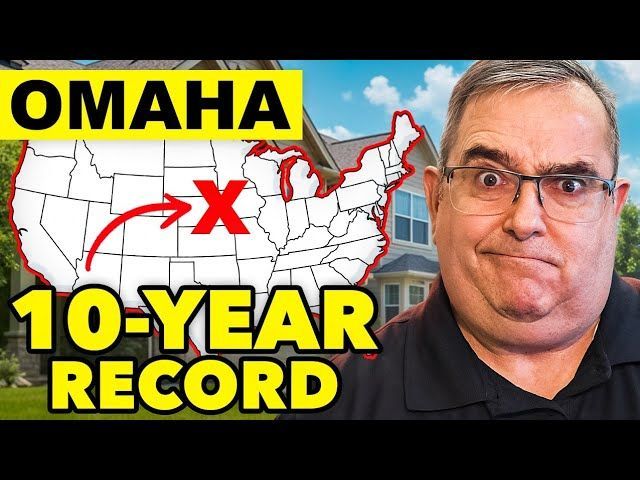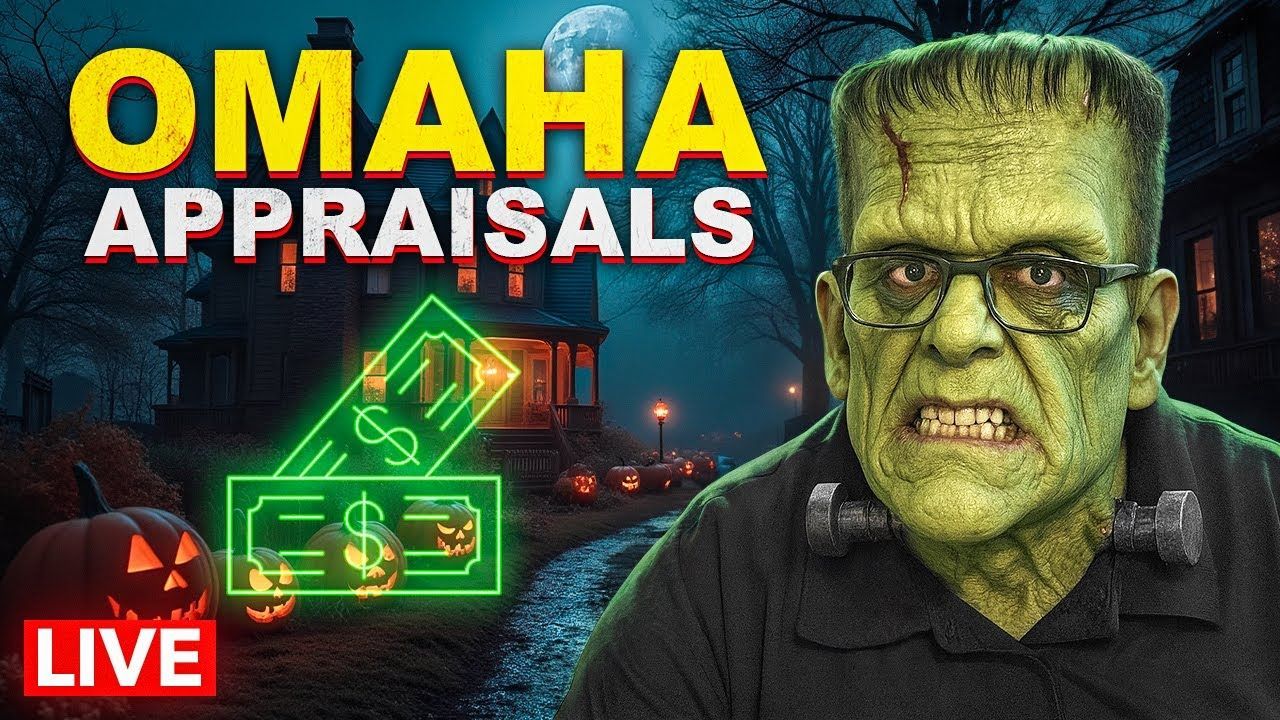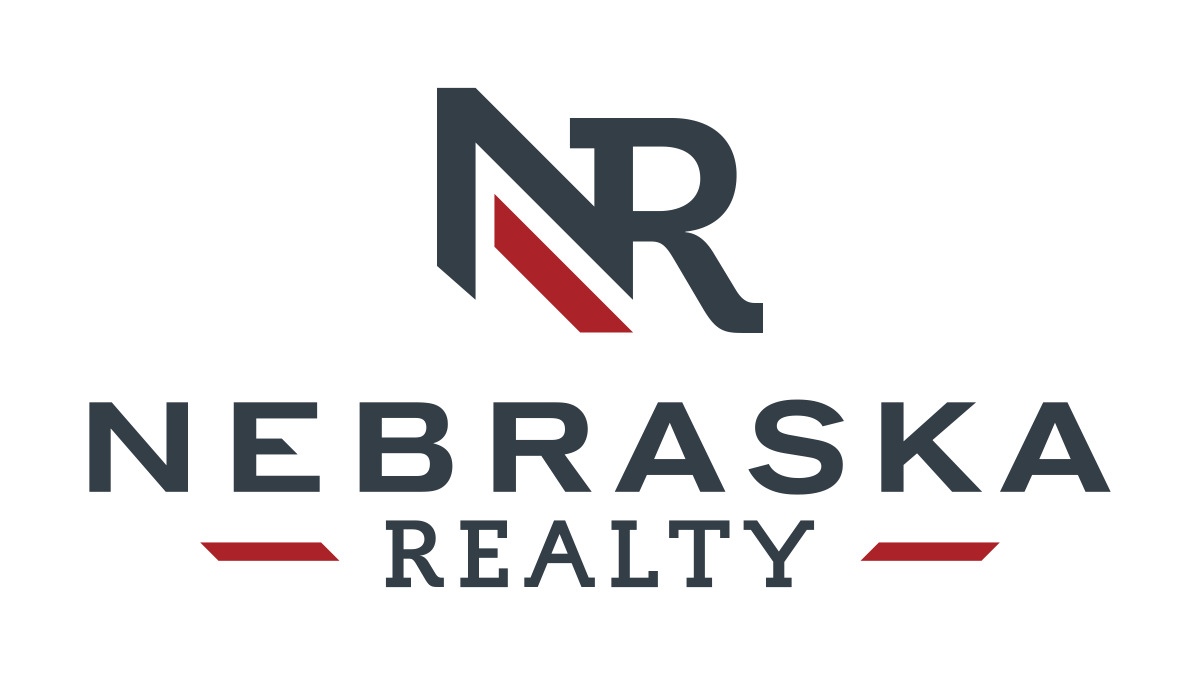The Fed’s Next Move Could Change Everything for Homebuyers
Table of Contents
- Overview
- How the Fed influences mortgage rates (but not directly)
- Inventory snapshot: what’s actually for sale right now
- Price ranges and where market activity lives
- New construction vs existing: price and volume differences
- Days on market and how quickly homes are selling
- Why 15 percent of contracts canceled can be a healthy sign
- Common inspection and FHA issues sellers should fix
- Pricing strategy that works: price right and price at break points
- Buyer tips: stop relying on open houses alone
- Don’t forget new construction — it can be affordable
- Winter buying: pros, cons, and practical tips
- FAQs About Omaha Real Estate Market
- Practical checklist for sellers
- Practical checklist for buyers
- FAQs about Omaha housing market
- Final thoughts
Overview
Mortgage rates just dipped to the lowest point of 2025 so far, with 30-year conforming loans hovering near 6.29 percent and FHA loans around 6.13 percent. That drop has buyers moving faster, refinances ticking up, and overall activity picking up in markets like Omaha. Yet at the same time, Redfin reported that roughly 15 percent of home purchase contracts were cancelled in September. That sounds like a contradiction, but it is actually a sign the market is returning to normal.
Tonight I want to walk through the connection between the Fed, bond yields, and mortgage rates. I will share what I am seeing in the local Omaha market — closed sales, inventory, prices, and days on market — and explain why more cancelled contracts can be a healthy sign. I will also give concrete advice for sellers and buyers: what to fix before listing, how to price right, and where buyers should look (hint: not just open houses).
How the Fed influences mortgage rates (but not directly)
There is a common misconception that when the Federal Reserve lowers the federal funds rate, mortgage rates drop immediately. That is not exactly how it works. The federal funds rate is a short-term interest rate banks use to lend to each other overnight. It strongly influences the bond market and the overall cost of short-term borrowing. Mortgage rates, particularly the 30-year fixed, are more closely tied to the 10-year Treasury yield.
In short: Fed policy affects expectations, which affect the bond market, which in turn influence mortgage rates. Right now markets expect a future rate cut, even though the Fed has not cut yet. That expectation has already pushed mortgage rates down.
What the current rate drop is doing to buyer activity
When rates fall, buyer affordability improves. More buyers can qualify for a given payment, monthly payment obligations shrink, and some buyers who were on the fence move forward. In our local market — Douglas and Sarpy Counties — I can see this playing out in the data.
Closed sales in Douglas and Sarpy County rose about 14.1 percent compared to 2024. That does not mean we are going back to the pandemic frenzy — the market peaks are still lower than 2021 and 2022 — but the uptick shows renewed activity.
Seasonality remains real: summer peaks, winter lows
Real estate is seasonal. Closed sales typically peak in late spring and early summer and then taper into fall and winter. For example, in January 2025 we had 630 closed sales, while January 2024 was 577 and January 2023 was 526. Comparatively, sales in June are much higher.
Seasonality matters, but one constant remains: a properly priced home sells any time of year. An overpriced home will struggle in any market. That is a point I emphasize to sellers: price it right on day one.
Inventory snapshot: what’s actually for sale right now
Inventory in Douglas and Sarpy County currently sits around 2,414 active homes on the market. Breaking that down by construction type, there are approximately 946 new-construction listings and 1,468 existing home listings.
That number for new construction can be deceptive. Builders often list homes at various stages — lot, foundation, framing — and many are not move-in ready vacant homes. Builders typically do not leave completed vacant spec homes sitting around because that ties up capital. In many cases a buyer will see the model, sign a contract, and the builder will then begin the actual construction on that purchase.
Price ranges and where market activity lives
Price distribution in Omaha has shifted since the low-price market years. There are only 12 homes currently listed under $100,000. The bulk of active inventory sits in the middle price tier:
- Under $100,000: 12 homes
- $100,000 to $200,000: 171 homes
- $200,000 to $450,000: 1,270 homes
- Above $450,000: 961 homes
Closed sales in the recent period tell a similar story: very few sales below $100,000, most activity in the $200,000 to $450,000 range, and a healthy upper-tier market above $450,000. This has implications for buyers and sellers alike: if you are looking below $200,000 you will likely have to act quickly, while buyers in higher tiers may see more choices.
New construction vs existing: price and volume differences
Existing homes still account for the majority of sales. New construction remains a meaningful portion but is smaller by volume. Builders peaked in 2023 when interest rates were lower, allowing buyers to build more expensive homes. As rates increased, builders adapted: smaller footprints, different finishes, or adjusted communities to meet buyer budgets.
New construction prices rose in some months — for example new construction prices were up about 3.2 percent year over year in Douglas and Sarpy County for September — because builders must cover rising material and development costs. One developer at a seminar I attended last year estimated nearly $100,000 to prepare a lot for construction once grading, utilities, and other site work were accounted for. Those costs matter and show up in pricing.
Days on market and how quickly homes are selling
When you strip out new construction (since spec and model home timelines distort days on market), the median days on market for existing homes is about eight days. Median means half the homes sold faster than eight days, half slower. The average days on market actually came down in recent reporting periods.
Fast median days on market indicate demand and properly priced homes moving quickly. But remember, speed only matters when pricing is right. If you list too high, your home can sit and raise suspicion among buyers about hidden problems.
Why 15 percent of contracts canceled can be a healthy sign
Redfin reported about 15 percent of home buying contracts were cancelled in September. That statistic made some headlines and worried a few sellers, but here is why I view this as a positive development.
During the pandemic buying frenzy, many buyers waived inspections and appraisal contingencies to win deals. They often paid cash or bid tens of thousands over list and covered appraisal gaps. That strategy got buyers into homes but sometimes without full due diligence. When a boom market forces buyers into corners, buyer remorse and later discoveries of unaddressed problems are common.
Now we are seeing a return to a more normal purchase process. Buyers are doing inspections. When an inspection uncovers issues, buyers will ask for repairs or credits. Some sellers are not prepared for that adjustment and deals fall apart. That is better for both buyers and the long-term health of the market: buyers do their due diligence, sellers understand needed repairs, and the deals that close are more sustainable.
Common inspection and FHA issues sellers should fix
If you are selling, being proactive can save deals. A pre-listing inspection is one of the best investments you can make. Fix obvious items now and disclose them. Here are common things that kill or slow transactions, especially for FHA borrowers:
- Peeling exterior paint
- Missing or loose handrails
- Trip hazards on stairs or walkways
- Obvious roof damage or active leaks
- Evidence of pests or animals in the attic, such as bats
- Unsafe electrical work or exposed wiring
Many FHA and government-backed loans trigger additional scrutiny by the appraiser, who may require fixes be completed prior to closing. If you wait, those repairs can be rushed, cost more, or derail the closing timeline. Fix small items now: scrape, prime and touch up peeling paint; secure the handrail; repair a broken lock box or uneven walkway. Not every cosmetic thing requires a full exterior repaint. Address the obvious items that would raise red flags during an inspection or appraisal.
Pricing strategy that works: price right and price at break points
The optimal time to capture buyer attention is the first days your home is on the market. That is when you get the most exposure and the highest chance of competitive offers. Pricing strategy matters:
- Price right from day one. If you list too high, buyers will assume something is wrong and may not look closely.
- Price on a major break point. For example if a home is worth roughly $400,000, list it at $400,000 exactly rather than $399,000 or $405,000. Listing at a clean break point exposes your home to both search groups: those looking under $400,000 and those looking at $400,000 and up.
- If you must reduce price, make a meaningful adjustment to trigger renewed interest. Small tweaks of $1,000 or $2,000 rarely generate new excitement.
Put simply: the listing honeymoon is limited. Use it wisely.
Buyer tips: stop relying on open houses alone
Open houses have a role, but they are not the best tool to learn the market. Open houses are primarily marketing tools for agents and sometimes a showplace for sellers who want activity. If you are serious about buying, focus on new listings and act quickly when a good property hits the market.
Practical buyer checklist:
- Work with an agent who watches the market and notifies you immediately when new matching listings appear.
- Look at homes that have just hit the market to establish a price baseline.
- Don’t rely on open houses to learn comparable pricing — many highly desirable homes never reach an open house because they sell quickly off-market or by private showings.
- Factor inspections into your offer strategy. A normal market allows inspections; plan for possible repair negotiations.
Don’t forget new construction — it can be affordable
Some buyers assume new construction is always out of reach. In Omaha, there are affordable new construction options if you know where to look. For instance, I recently put together a contract for a client who bought a brand-new 3 bedroom, 2 bath ranch in North Omaha with a one-car garage for $245,000. That home had new sewer, new roof, a new furnace, and a passive radon mitigation system.
Builders sometimes offer programs for owner occupants only, not investors. Those programs help expand affordable homeownership but come with income or occupancy restrictions. If you are in a price tier above $300,000 or $325,000, do not ignore new construction — it can be a competitive option with warranties and brand-new systems that older homes lack.
Winter buying: pros, cons, and practical tips
Buying in winter is different. There is seasonality and visibility trade-offs:
- Pros: Less competition and some sellers who need to move will negotiate. You also get a feel for snow removal quality and how the neighborhood operates in winter.
- Cons: You cannot easily inspect yard conditions, driveways, or trees. Snow hides slope issues, and you might miss driveway heaving or other outdoor problems.
- Tip: For lots on slopes, look for recent new fencing or repairs that indicate erosion or shifting. Also consider lot orientation: south-facing homes get afternoon sun that helps melt snow; north-facing lots are more shaded and can show icy driveways longer into the day.
What changed since the pandemic frenzy
The pandemic market had three characteristics that created a unique, often unhealthy environment:
- Ultra-low interest rates gave buyers enormous purchasing power.
- Extremely low inventory created intense competition for every listing.
- Many buyers waived standard protections like inspections to win deals.
That combo caused price inflation, overbidding, and buyers sometimes acquiring homes that later revealed costly hidden defects. Today, rates are higher than the pandemic lows but falling from recent highs, inventory is healthier, and buyers are asking for inspections again. That means fewer blind purchases and fewer surprise problems after closing.
Practical checklist for sellers
If you are getting ready to list:
- Consider a pre-listing inspection to identify issues you can fix ahead of time.
- Address FHA red flags like peeling paint, handrails, and obvious trip hazards.
- Price your home correctly and on a major break point to maximize exposure.
- Make meaningful price reductions if you need to re-energize interest; small reductions rarely help.
- Stage and repair obvious items that buyers see as they approach the home, including the lockbox and front entry area.
Practical checklist for buyers
If you are a buyer in this environment:
- Team with an agent who watches fresh listings and can get you into new properties fast.
- Always plan for an inspection and build repair contingency or negotiation expectations into your offer.
- Consider new construction programs for affordable, warranty-backed homes if you qualify.
- Be realistic about affordability and budget for post-purchase repairs and maintenance.
FAQs About Omaha Real Estate Market
How do Fed expectations move mortgage rates even before a Fed cut?
Markets price in future Fed actions. When investors expect the Fed to cut the federal funds rate, bond yields — including the 10-year Treasury — can move lower in anticipation. Since 30-year mortgage rates are influenced by longer-term Treasury yields, mortgage rates often fall as investors reposition for an expected easing. The Fed does not need to cut first for mortgage rates to drop; expectations alone can move the market.
Are mortgage rates and the federal funds rate directly linked?
No. The federal funds rate affects short-term borrowing and the broader economic outlook. Mortgage rates are more tied to long-term bond yields, particularly the 10-year Treasury. Fed policy influences those yields indirectly through expectations and inflation outlook, but the relationship is not one-to-one.
Why did 15 percent of contracts cancel in September and is that bad?
Many cancellations are a return to normal market behavior. Buyers are again conducting inspections and sometimes negotiating for repairs. When sellers are unprepared for repairs or price adjustments, deals may fall apart. That is healthier than the pandemic-era practice of waiving inspections to win bidding wars. Ultimately, buyers who lose one deal often buy another home, so cancellations are not necessarily a sign of weakening demand.
What should sellers fix before listing?
Take care of obvious safety and FHA-related issues: peeling paint, missing handrails, obvious trip hazards, leaky roofs, and any signs of pests or animals in attics. A pre-listing inspection helps you know what buyers or appraisers will flag. Fixing small issues now prevents them from derailing a sale later.
Should buyers focus on open houses to learn the market?
No. Open houses are useful for general exposure but are not the best way to learn current market pricing. A really good home often sells before an open house. Instead, focus on fresh listings, work closely with an agent, and build a baseline by seeing multiple properties that have just hit the market in your target price range.
Is new construction a realistic option for budget-conscious buyers?
Yes. In some markets, builders offer affordable programs for owner-occupants, and there are new-construction homes under $250,000 in areas like North Omaha. These homes include new systems and warranties, which can be attractive to buyers. Some programs exclude investors and have income or occupancy restrictions, so buyers should check eligibility.
Final thoughts: timing and personal readiness matter more than market timing
There is never a perfect moment to buy or sell. Interest rates move, the Fed signals, and inventories ebb and flow. The best time to buy is when you can afford the home, have a realistic budget for maintenance, and can secure financing that fits your financial plan. The best time to sell is when you prepare the house properly, price for the current market, and show the home at its best in those early, critical days on market.
We're seeing positive signs: mortgage rates have come down, refinance activity is picking up, and affordability is improving relative to recent highs. At the same time, buyers are getting back to doing inspections, which is healthy. Sellers who pre-inspect, fix obvious issues, and price strategically will have the advantage.
If you are relocating to Omaha, our FREE relocation guide can help you understand neighborhoods, schools, and current market opportunities. And if you want to talk through strategy — buy, sell, or refinance — get in touch with an agent who watches fresh listings and understands how local inventory and pricing behave in both seasonal and rate-driven cycles.
Thanks for reading. Keep an eye on rates, take inspection results seriously, price on break points, and don’t forget to look at new construction options. If you do those things, you will put yourself in the strongest position no matter which direction the Fed moves next.
DAVID MATNEY
David Matney is a trusted Realtor® and local expert with over 20 years of experience in Omaha’s real estate market.













